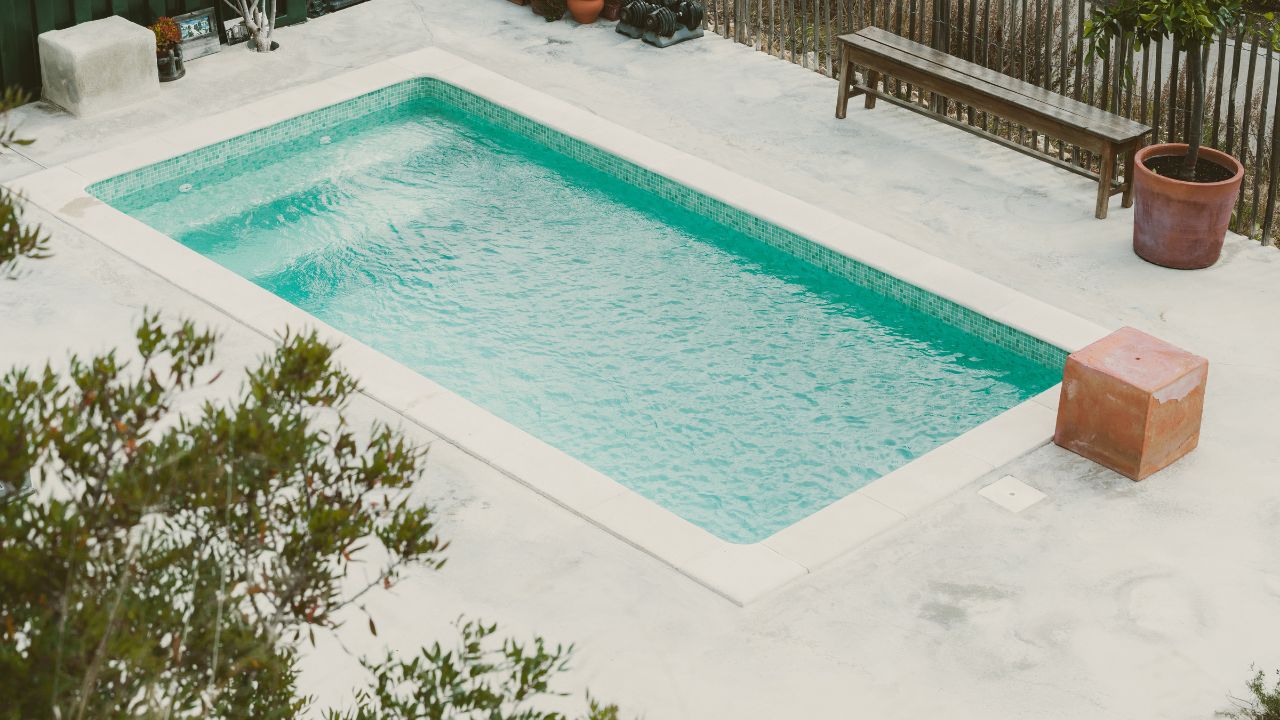Pool requires maintenance and resurfacing to stay in top shape. Resurfacing helps maintain the durability and aesthetic appeal of the pool while preventing leaks and damage. However, estimating the cost of pool resurfacing can be tricky.
How to Calculate Pool Resurfacing Cost?
The total cost of resurfacing a pool depends on multiple factors, including pool size, material costs, labor expenses, and any additional costs.
Here’s the step-by-step breakdown of the calculation:
Step 1: Calculate the Pool Surface Area
The surface area of the pool that needs resurfacing includes:
- Bottom (Floor): Length × Width
- Walls (4 sides): (2 × Length × Depth) + (2 × Width × Depth)
Formula:
Surface Area=(L×W)+2(L×D)+2(W×D)
Step 2: Calculate Material Cost
Once the surface area is determined, the material cost is calculated by multiplying the total surface area by the cost per square foot of resurfacing material.
Formula:
Material Cost=Surface Area×Material Cost per sq. ft
Step 3: Calculate Labor Cost
Labor costs vary based on the complexity of the resurfacing job and regional labor rates. The labor cost is determined by multiplying the total surface area by the cost per square foot for labor.
Formula:
Labor Cost=Surface Area×Labor Cost per sq. ft
Step 4: Include Additional Costs
Additional costs may include expenses for pool draining, repairs, chemicals, and finishing work.
Formula:
Total Additional Cost=Any Extra Costs
Step 5: Calculate the Total Pool Resurfacing Cost
To get the final resurfacing cost, add up Material Cost, Labor Cost, and Additional Costs.
Formula:
Total Cost=Material Cost+Labor Cost+Additional Cost
Example Calculation
Let’s say you have a rectangular pool with the following details:
- Length: 20 ft
- Width: 10 ft
- Depth: 5 ft
- Material Cost: $5 per sq. ft
- Labor Cost: $3 per sq. ft
- Additional Costs: $500
Step 1: Calculate the Surface Area
Surface Area=(20×10)+2(20×5)+2(10×5)
Surface Area=200+200+100=500 sq. ft
Step 2: Calculate Material Cost
Material Cost=500×5=2500
Step 3: Calculate Labor Cost
Labor Cost=500×3=1500
Step 4: Add Additional Costs
Total Additional Cost=500
Step 5: Calculate Total Resurfacing Cost
Total Cost=2500+1500+500=4500
Final Cost Estimate:
$4,500 to resurface the pool.
FAQ
1: What is Pool Resurfacing?
Answer: Pool resurfacing is the process of repairing and refinishing the interior surface of a swimming pool. Over time, the pool's surface can deteriorate due to wear and tear, chemical damage, or aging. Resurfacing involves removing the old surface material (e.g., plaster, tile, or fiberglass) and applying a new finish to restore the pool's appearance, functionality, and durability.
2: How Often Should I Resurface My Pool?
Answer: The frequency of pool resurfacing depends on the type of pool finish and how well the pool is maintained. Here are some general guidelines:
- Plaster Pools: Every 7–10 years
- Pebble Tec or Aggregate Pools: Every 15–20 years
- Fiberglass Pools: Every 15–25 years
- Regular maintenance, proper water chemistry, and timely repairs can extend the lifespan of your pool's surface.
3: How Much Does Pool Resurfacing Cost?
Answer: The cost of pool resurfacing depends on several factors, including:
- Pool Size: Larger pools require more materials and labor.
- Surface Material: Plaster is the most affordable, while pebble finishes and tiles are more expensive.
- Labor Costs: These vary by location and contractor.
- Additional Repairs: If there are cracks or structural issues, the cost will increase.
On average, pool resurfacing costs range from 5,000to
5,000to10,000 for a standard-sized pool. For a more accurate estimate, use a Pool Resurfacing Cost Calculator or consult a professional contractor.

Check out 14 similar Pool Resurfacing Cost Calculator :